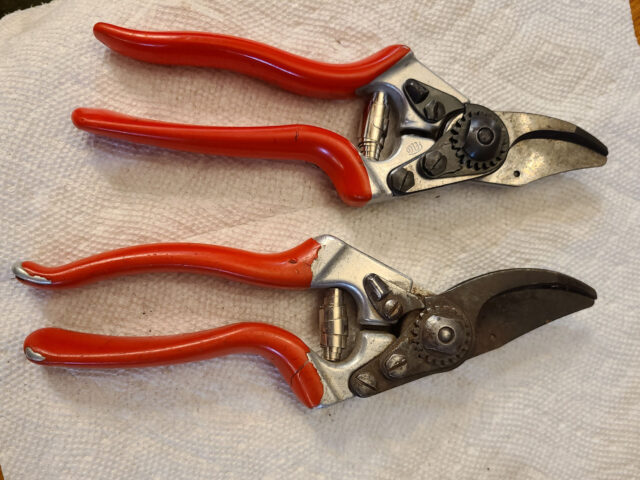
In mud season you only have the option of pruning your plants and weeds. The ground is still frozen. This is a good excuse to go outside and actually do gardening! It’s important to plan ahead when it comes to pruning. The weather can be unpredictable during the mud season. Prioritizing tasks will depend on your design goals.
The first pruning that I did during this mud-season was on the branches of spring flowering shrubs I wanted to bring indoors: February daphne (Chaenomeles), forsythia and flowering quince. It was easy to do this on a mild, sunny day even though there were still a few inches of snow on the ground.
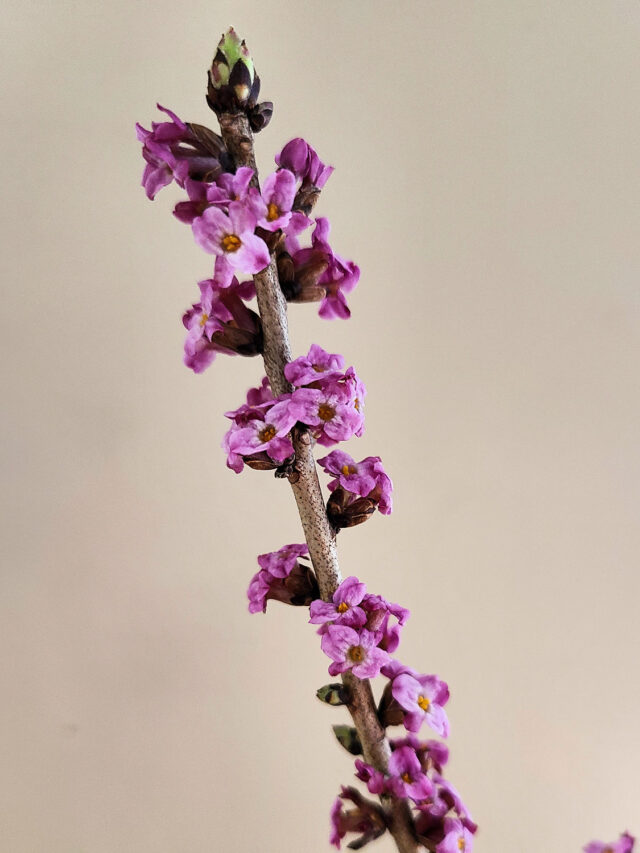
Instead of hacking at random, I only try to cut branches that are crossing or need to be removed for another reason. Daphne branches are perfect for this. They were full of buds. This year’s forsythia bloomed ten days after the daphne and only had a few buds. I am still waiting for my quince to open. Sometimes the buds do not open completely, but they look like the picture below when they finally do.
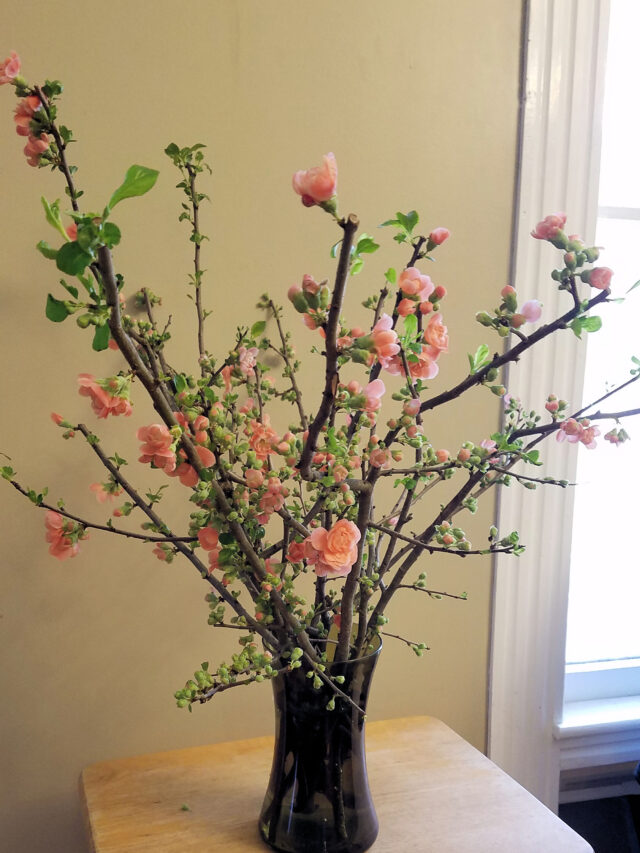
It’s true that not all shrubs need to be pruned every year. This is especially true if the mature height and width of the shrub match the available space. Sometimes you may want to prune the shrub to make it look better.
I then used hedge trimmers to cut my spireas in globes. Since the spireas were surrounded by perennials, I had to complete this task before the soil defrosted even a little.
I used to prefer to leave my shrubs in their natural shapes, but now I appreciate the contrast of geometrical forms and organic shapes. The spireas are very responsive to shearing and their new growth, which is most vibrantly colored, makes them a great contrast to the rest of their beds.
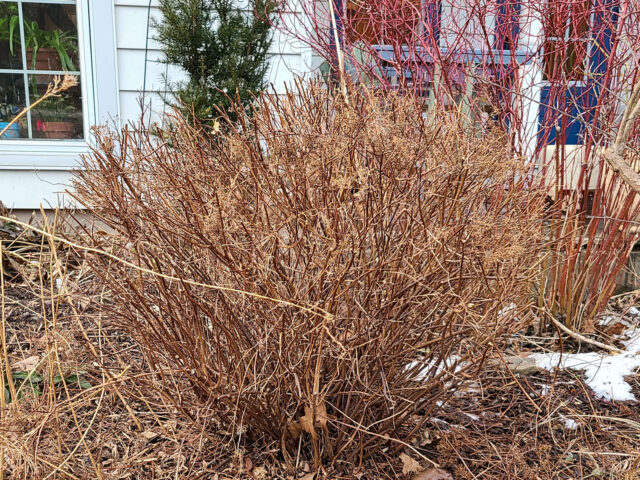
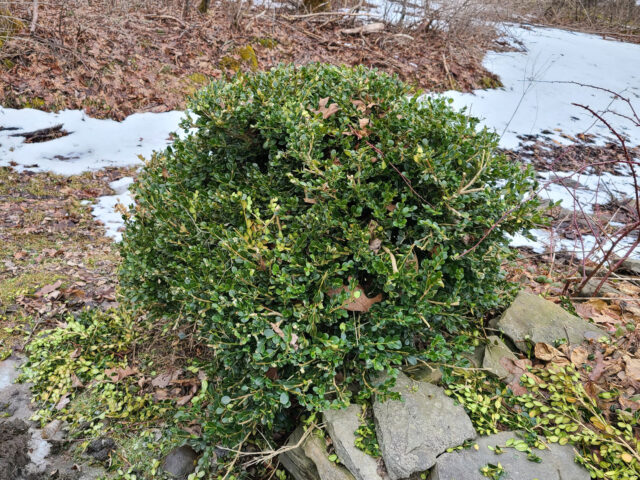
After I had sheared my boxwood, Proven Winners advised that I should not prune the boxwood until the new growth appears. Oh, well. I don’t believe the early shearing of this boxwood will harm it. It was planted in our yard by previous owners, and I don’t believe I have touched it for the past ten years. It was a mess with branches sticking in all directions, some of which were half-dead. Next year, I might trim it when the new growth appears.
As soon as I saw that the hellebore’s leaves weren’t frozen to the ground anymore, I began cutting them. I have learned from observation and taking notes that the fresh, new hellebore leaves and flowers are much more attractive without the blackened slime around them. The hellebore leaves are evergreen in many climates. But not here.

The epimediums are also cut back for the same reasons I trim the hellebores. The flowers appear early and they look much better without the foliage from last year.
I am currently removing the foliage from my peonies that I should’ve removed in October. It is important to remove the foliage as soon as possible. My peonies are plagued by botrytis. It’s not timely, but it is better than never.
The first time I ever took apart my Felcos, I cleaned them thoroughly and lubricated. The video of Laura LeBoutillier from Garden Answer was the one that gave me the courage.
You’ll feel less rushed if you set aside some time for this task. It will also save you a lot of frustration if you have the correct size tool to loosen the screws before you begin. It’s not always the case that all tools are in their proper place. I had a different pruner model than Laura, so I needed to find a different-sized wrench. It’s possible if you have everything together before starting.
After sharpening my pruners, I cut my witch hazels back to their first bloom. I did this while they were still in bloom and I knew exactly where it was. This is supposed to encourage them grow more flowers. We’ll see.
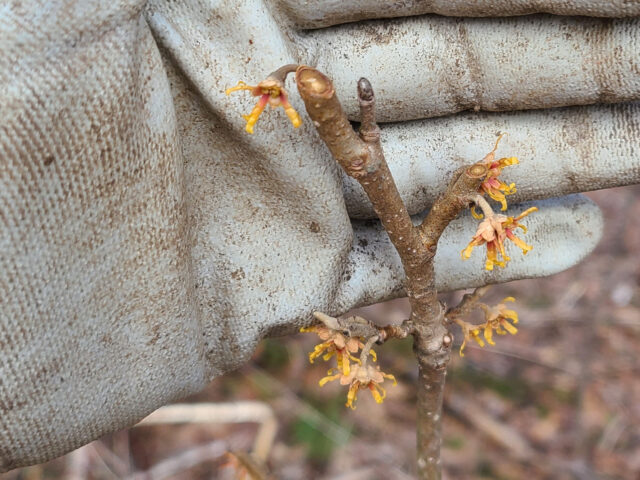
Next steps in pruning
The frozen ground or the barely thawed soil made it easier to prune. I wanted to prune shrubs and plants that were dormant or just waking up. The temperature needs to be warmer to allow me to finish the pruning. This is because I want the shrubs around me to indicate where I should cut.
Wait until leaf buds are swelling before pruning Hydrangea paniculata cultivars (PeeGee type) and H. arborescens (Annabelle types) cultivars. You can prune them either in the spring or fall. I have never thought of pruning them in the fall because I love seeing snow on dried flowers. Who am I kidding? But who am I kidding?
Proven winners advises that you should not prune more than 30% of either type. For example, if a hydrangea measures six feet high, it’s safe to remove up to two feet from the top and side. Lee Reich writes in The Pruning book, to cut back to ground or to a permanent framework.
Lee Ginenethal has a method of pruning his H. The paniculata ‘Limelight’: “First, remove any branch not significantly thicker than the thickness of a pencil. All new growth should be trimmed to the first or second buds. The final step is to open up the crown structure for a rounded shape. I’m going to try Lees method this season. My garden has panicle hydrangeas such as Berry White, Vanilla Strawberries, Limelight Prime and Bobo.
Fun fact: H. The paniculata plant can be trained to grow into a large tree. This always confused me because the botanical name “arborescens”, sounds like a larger tree. H. Arborescens will slowly expand its territory. This is true in my garden for the Incrediballs as well as the Incincibelles. All my hydrangeas have been sent to me for trial.
It sounds like I need to get started on pruning my hydrangeas. Why even prune them? Keep them from turning into a dense thicket of branches that don’t get enough light. Once they are established, both species will reach the height determined by their genetics. The height of the plants cannot be reduced by pruning. Check the tag on the plant before buying and make sure it’s right for the location you want to use.
Rose pruning
Roses-even hardy roses-often have dieback in my garden. I wait until the leaves on the roses swell to see how much deadwood needs to be cut.
If you’re interested in learning more, Lee Ginenthal from Der Rosenmeister Nursery offers some videos about rose pruning. All of these videos are on Facebook. You might not be able to see them without an account.
- Pruning roses
- How to prune a climber
- How do you prune and train your climber
- Part 1: Pruning the rambling rose
- Part 2. Pruning a rambler
- Part 3, pruning ramblers
- Part 4, pruning ramblers
- Part 5, the last part of pruning ramblers
Whacking jobs
It’s the easiest way to prune: just knock the entire thing down. Last year, I began doing this with the purple-leaved Smokebush which was already here when we moved. It doesn’t produce “smoke”, the wispy, misty panicles that give smokebush it’s name. People who don’t want the smoke will cut down the shrub every year, which causes it to produce bigger leaves.
The smoke isn’t showing up as I would like it to, most likely because the flowers have been killed by the cold. Last year, I cut it down to the ground. I was apprehensive about cutting it back to the ground, but eventually, it grew and the reddish-purple leaves grew larger.
Since it leaves out late, I save it until later.
This year, I will cut all the branches off my redtwig dogswood to the ground. The youngest branches should be the brightest, but I see that they look more yellow towards the base.
I will also dig up those satellite shrubs to give them a home. This shrub is known for its vibrant branches, and I’m not going to cut it until I absolutely have to. That will be when I start to see the buds swell. I don’t want it to spend energy on making leaves because they won’t stay.
It’s recommended that you prune cross-branch branches as soon as you find them. But I will wait until this rhododendron has bloomed before I do so. Why? I have to remove a large branch and I don’t wish to lose those flowers. By then, it won’t even be mud season!
You can see that the reasons for pruning can have a big impact on how to prune. The dried flowers look beautiful with snow. I could have pruned those hydrangeas during autumn but I prefer the appearance of snow. It is “correct” to prune spring-flowering plants two weeks following their bloom, but I prefer to bring the branches inside earlier. If I wanted to keep the natural shape of the spireas, then I could leave them as they are and only remove the oldest branches. If I have to, I can prune the dead wood off the rose bushes during the summer. But it is much easier to do this before the shrubs are leafed out. Some pruning decisions are based on aesthetics and others are based on logistics. You (or I) decide.







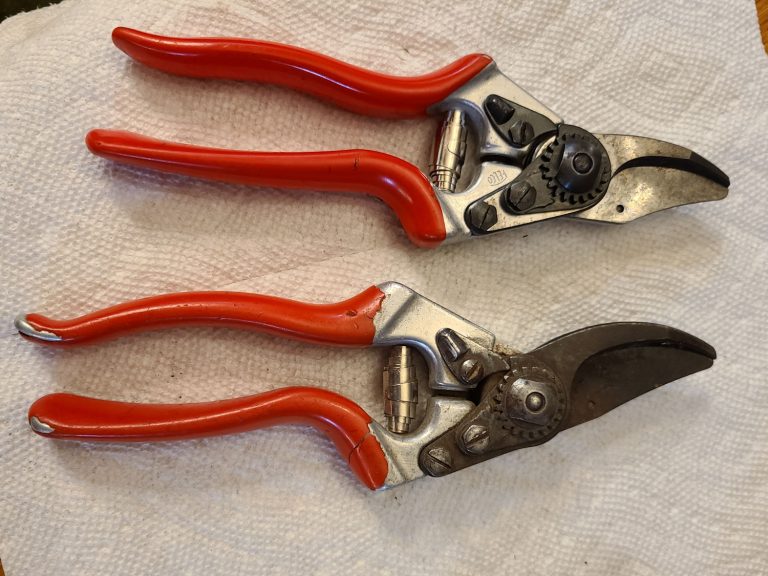
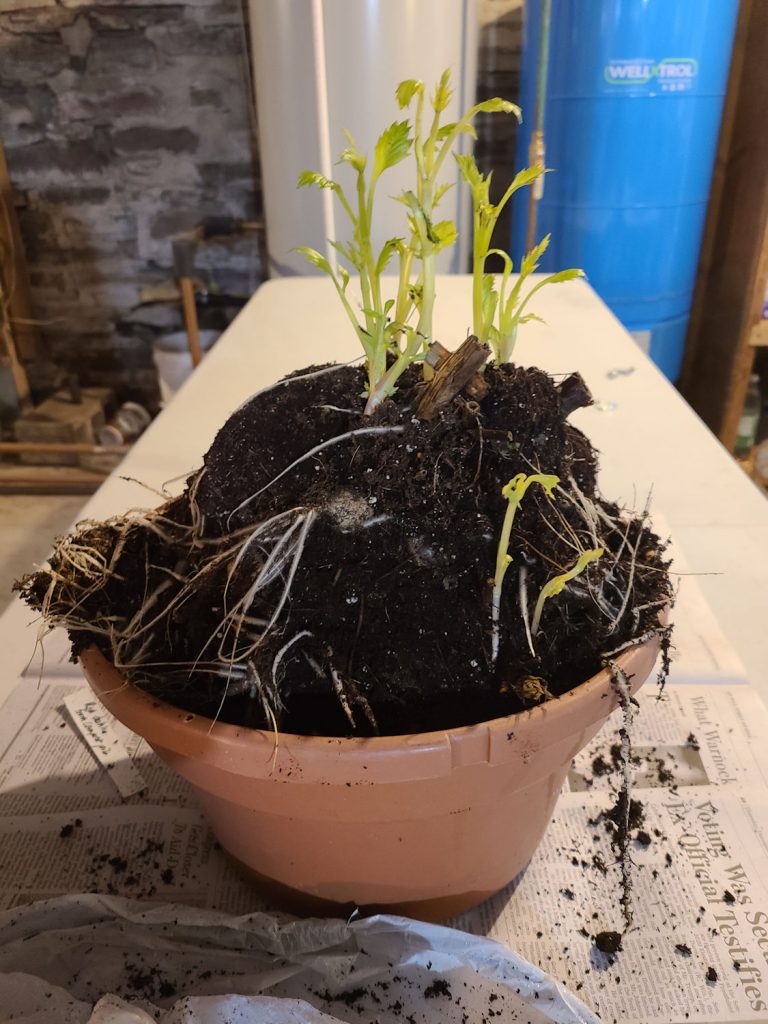
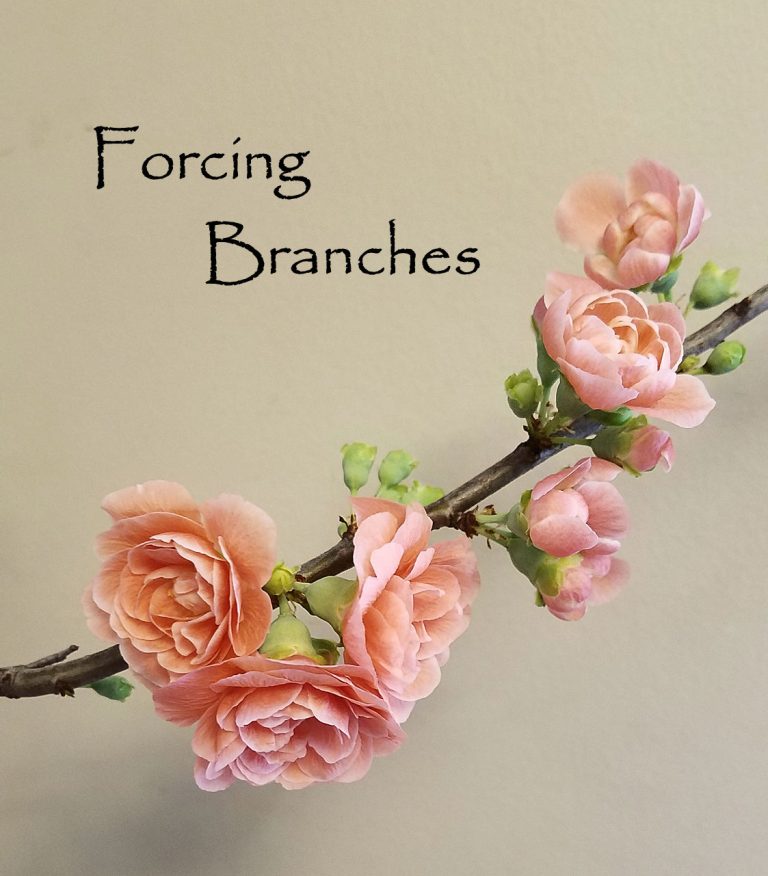
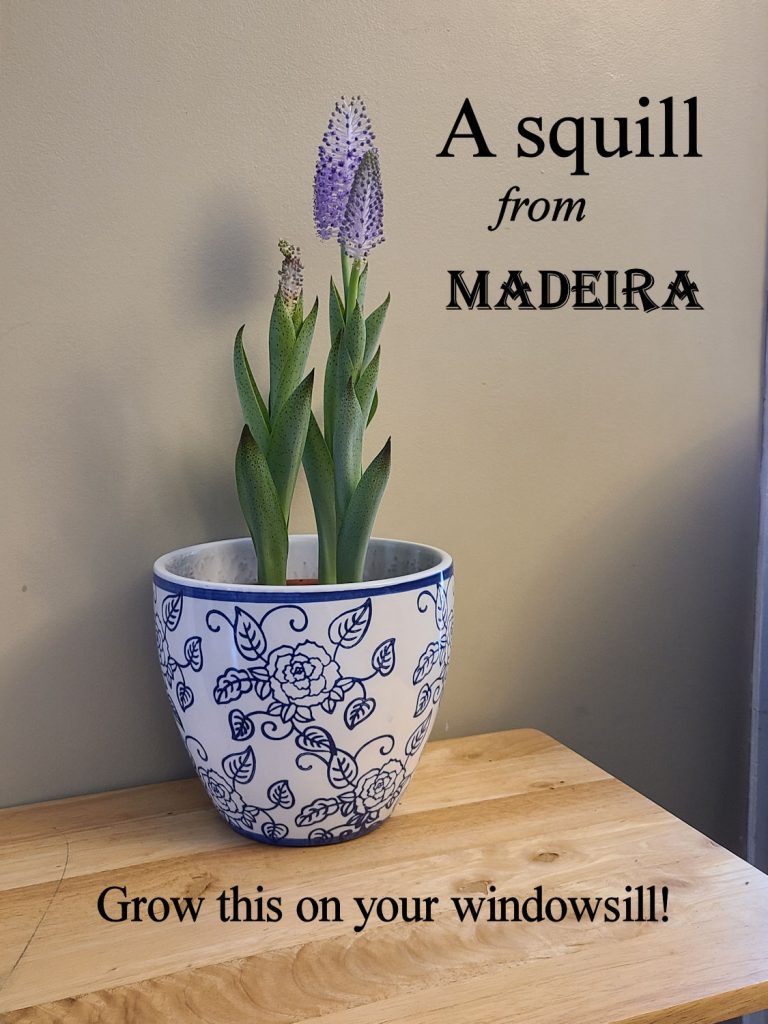





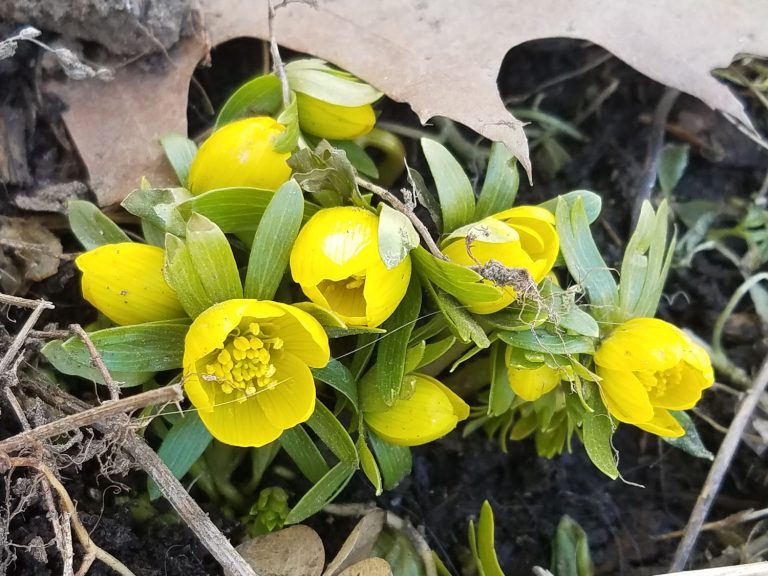

+ There are no comments
Add yours